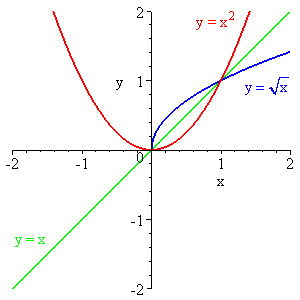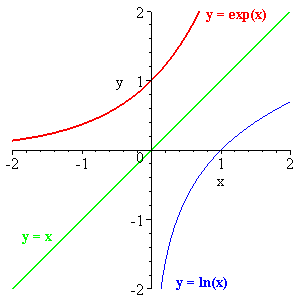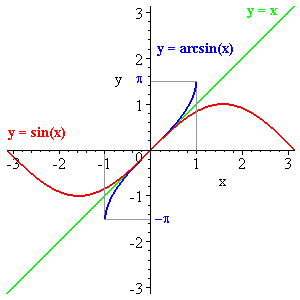 |
What are inverse functions?
Take a function f: draw its graph in the usual way; interchange x and y axes,
and you have the graph of the inverse function f-1: y = f(x) means
x = f-1(y).
This can be accomplished with a drawing on a piece of paper by turning the paper
over, orienting so that the old first quadrant appears in the upper right corner,
and looking through the paper at the old graph.
Do not confuse the inverse with the reciprocal function; they are completely different
concepts; careless people may use notation that is the same for both; this is
a bad thing to do since it promotes confusion.
Notice that if you substitute x = f-1(y) into y = f(x) you get x =
f-1(f(x) )
Some interesting pairs:
| |
| f(x) |
f-1(y) |
| xk |
y1/k |
| exp x |
ln y |
| sin x |
arcsin y |
| tan x |
arctan y |
|
 
 
|
 |